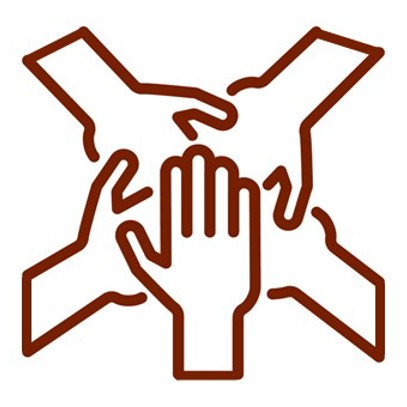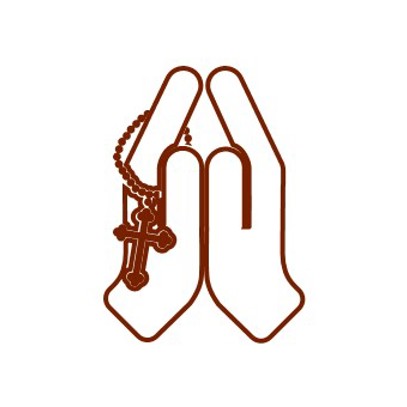Inquiry Question: What is Solidarity?
By the end of this unit, students will understand that humanity is interconnected and that our actions can impact communities and the environment around the world.
Before you start:
- Watch the Catholic Social Teaching (CST) film, ‘Solidarity’, for your own background and familiarise yourself with the Solidarity poster.
- Download the various resources referenced at the bottom of this page (worksheets, slides etc.). Print student handouts and have weblinks ready to go on your computer/interactive whiteboard.
- Read/watch the stories and videos linked in this learning sequence to determine if they are appropriate for your class.
- Locate any Scriptures and copies of Church texts (hyperlinked within the learning sequence below).
See-Judge-Act-Pray Process
This learning sequence has been created using the ‘See, Judge and Act’ model.
This reflection–action process was first used by a Belgian Catholic priest, Joseph Cardijn (who later became a Cardinal) with Young Christian workers prior to the first World War.
This approach was also recommended in the 1961 encyclical letter written by Pope John XXIII called Mater et Magistra (Mother and Teacher).
Definition
- a firm and persevering commitment to the common good, which reminds us that everything is related
- the act of standing shoulder to shoulder with others
- a way of saying, ‘I’m here with you’.
Student-friendly explanation:
- We are all connected.
- We need to work together and support each other as one human family.
Learning intention
We are learning:
- the meaning of the term ‘solidarity’
- how Caritas Australia and their partners display solidarity to people around the world
- that we are all brothers and sisters and if one of us suffers, we all suffer; therefore, highlighting that we are all connected
- how to demonstrate solidarity.

SEE
Display and read the definition of solidarity. Discuss the meaning of each definition statement.
Definition:
- a firm and persevering commitment to the common good, which reminds us that everything is related
- the act of standing shoulder to shoulder with others
- a way of saying, ‘I’m here with you’
Using the Think-Pair-Share method, ask students to explain the term ‘solidarity’ in their own words. Discuss examples of where students have shown or seen others display solidarity.
Display the image on page 2 in the Solidarity Presentation. Engage students into a discussion using the Turn and Talk strategy. How does this image connect to you? To your family? To your neighbours? Explain that this image is of an area in the Solomon Islands where they have had to raise areas of their community due to rising sea levels. See notes section in the presentation for additional information. Now they have context to the image, how does this change their connection to the image?
Using Turn and Talk strategy, have students explore the 3Y’s: Why does this matter to you? Why might it matter to people around you? Why might it matter to the world?
Source: Harvard University
Display the Caritas Australia Solidarity poster. Breakdown the text and visual imagery provided to ascertain the meaning of the poster. Discuss how this poster is representing solidarity.
Teacher’s Note: Each of the people in the images have experienced hardship. For 60 years, Caritas Australia has been working with communities around the world to confront the challenges of poverty, conflict and natural disasters. Through locally-led programs, we work with all people towards a world where all can thrive and reach their full potential. Regardless of where people live, we are all part of one world, one community, one family. We are all connected.
Deep dive into the case study of some of the people represented on the Caritas Australia Solidarity poster. Break students into groups to explore one of the following three people or communities. Groups are to complete the ‘Deep Dive’ handout for their allocated case study. Case Studies are: Leaia, Thu, Ronita.

JUDGE
Build as a Team activity. Break students into groups of 3 or 4 and provide them the same building materials to create something. The building materials can range from books to duct tape to boxes to string. Whatever you have available works. Decide if your student teams should all build the same thing, like the best bridge, or leave it open-ended and see where their imaginations take them.
Source: ProdigyGame
Read 1 Corinthians 12: 12 – 26. Explain to students that we are part of one global family, and we all have a part to play; and discuss how this reading demonstrates solidarity by focusing in on verse 26. Where is the link between this verse and the Solidarity poster?
In pairs or individually, students create their own poster illustrating this verse 1 Corinthians 12: 26 and the meaning of solidarity. They can use their own words. Display these around the classroom.

Act
Create a Solidarity Jar.
Brainstorm ideas of different actions people can do to demonstrate solidarity to people in their everyday live.
Students work in pairs to write one idea of how they can demonstrate solidarity. This act is then folded and placed into the Solidarity Jar.
Each day, invite a student to randomly select a Solidary action idea from the jar to be conducted by all students at some point during the day.

Pray
Create a solidarity tree.
Create a large tree drawing on the classroom wall. Provide each student with leaves for them to write a prayer of solidarity. Add these leaves to the tree, creating a visual representation of solidarity in the classroom.
Related downloads:
- Solidarity Presentation
- Caritas Australia Solidarity poster
- ‘Deep Dive’ handout
- Case Studies are: Leaia, Thu, Ronita













